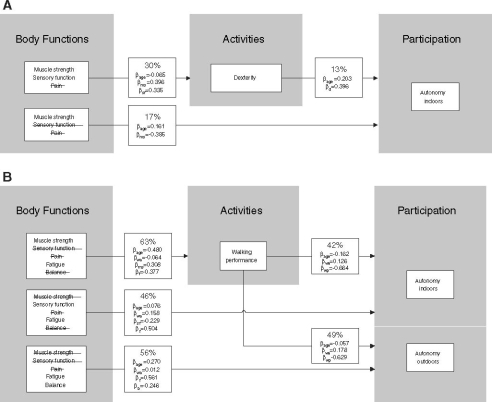Fig. 2.
Linear regression analysis of associations between body functions, activities, and participation, for arm functioning (A) and leg functioning (B), after adjustment for age (A and B) and the use of walking aids (B). Interpretation (Figure 2A, box starting with 30%): analysis of the effect of independent body functions (represented by muscle strength, sensory function, and pain) on dependent activity (represented by dexterity), resulted in a model explaining a total of 30% (Adjusted R2 × 100) of the total variance in dexterity scores, when adjusted for age, with a significance of p < 0.01. Pain was eliminated as contributing variable in the stepwise procedure. The relative contribution of the independent variables is expressed as β, the standardized coefficient beta. βage, beta age; βms, beta muscle strength; βsf, beta sensory function; βd, beta dexterity; βwa, beta walking aids; βf, beta fatigue; βb, beta balance; βwp, beta walking performance. In Figure 2A, box 30%: when dexterity on the SODA is improved by 1 point, age is increased by −0.065 years, muscle strength is increased by 0.396 Z-score, and sensory function is increased by 0.335 points

